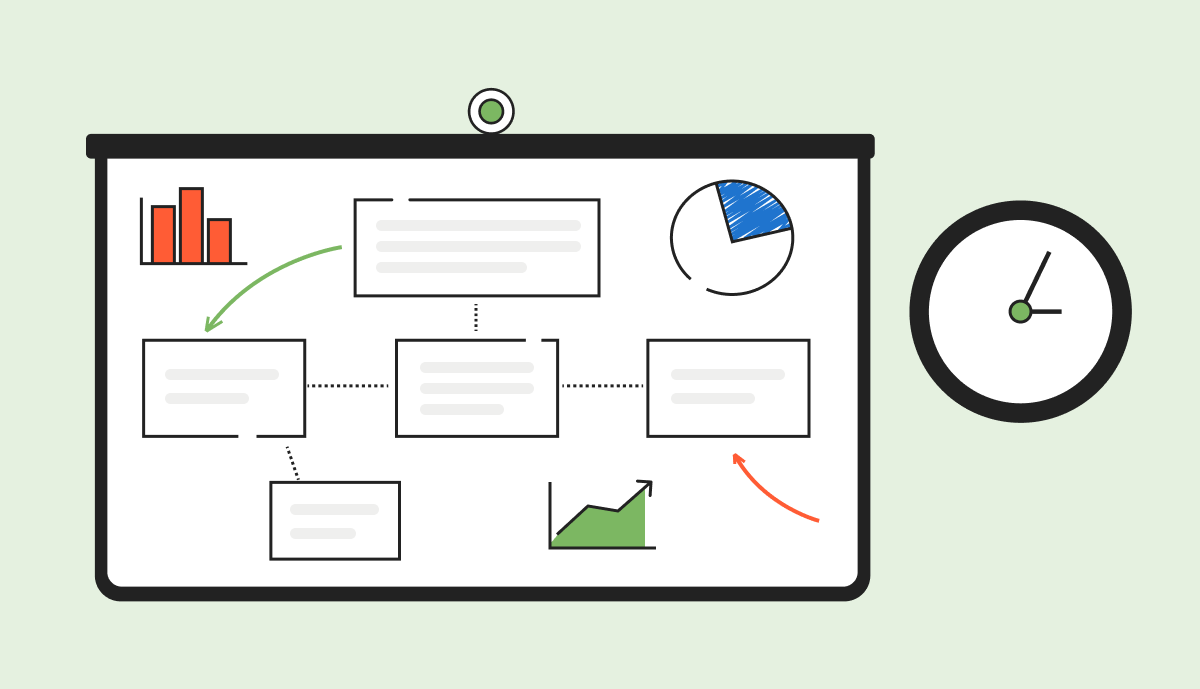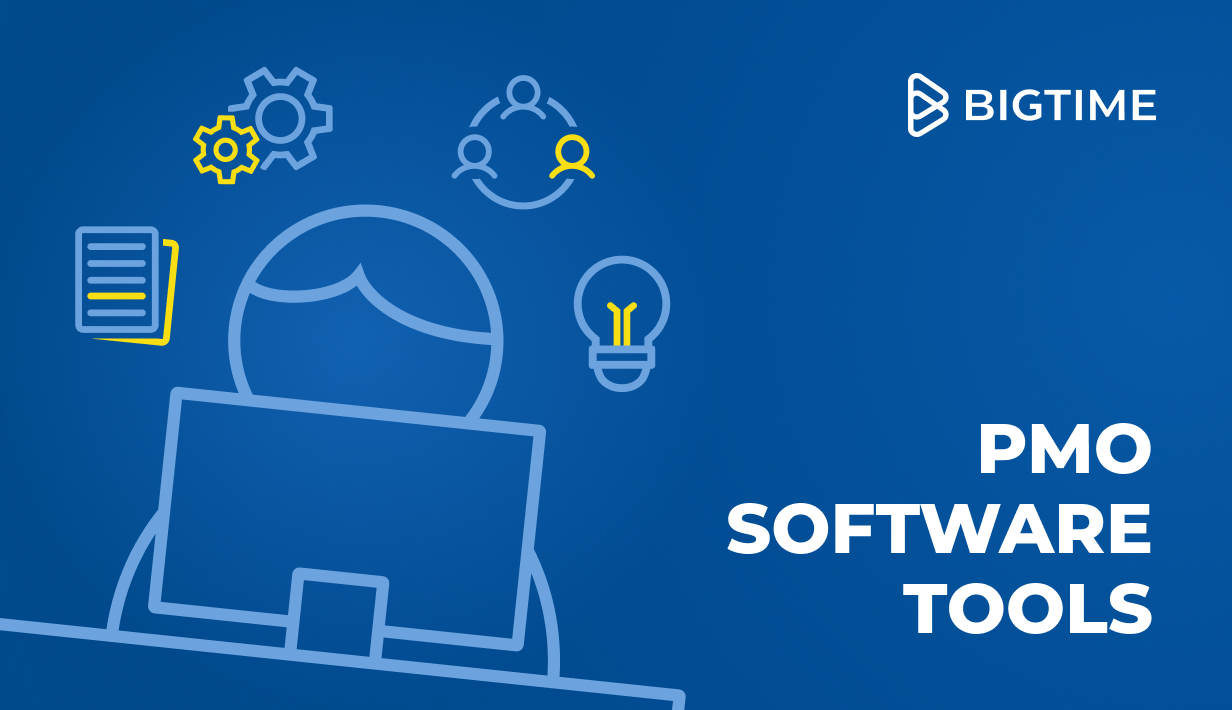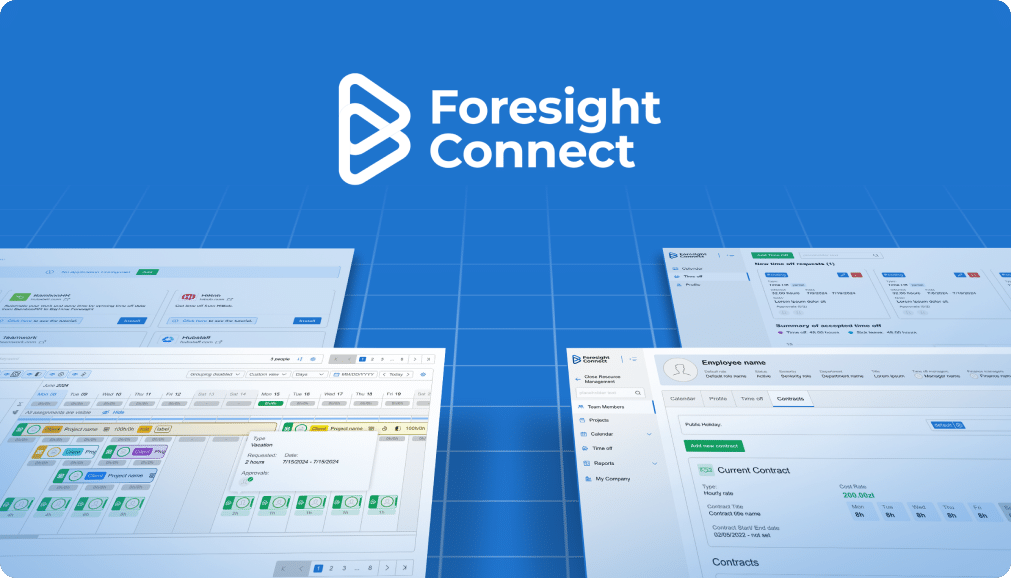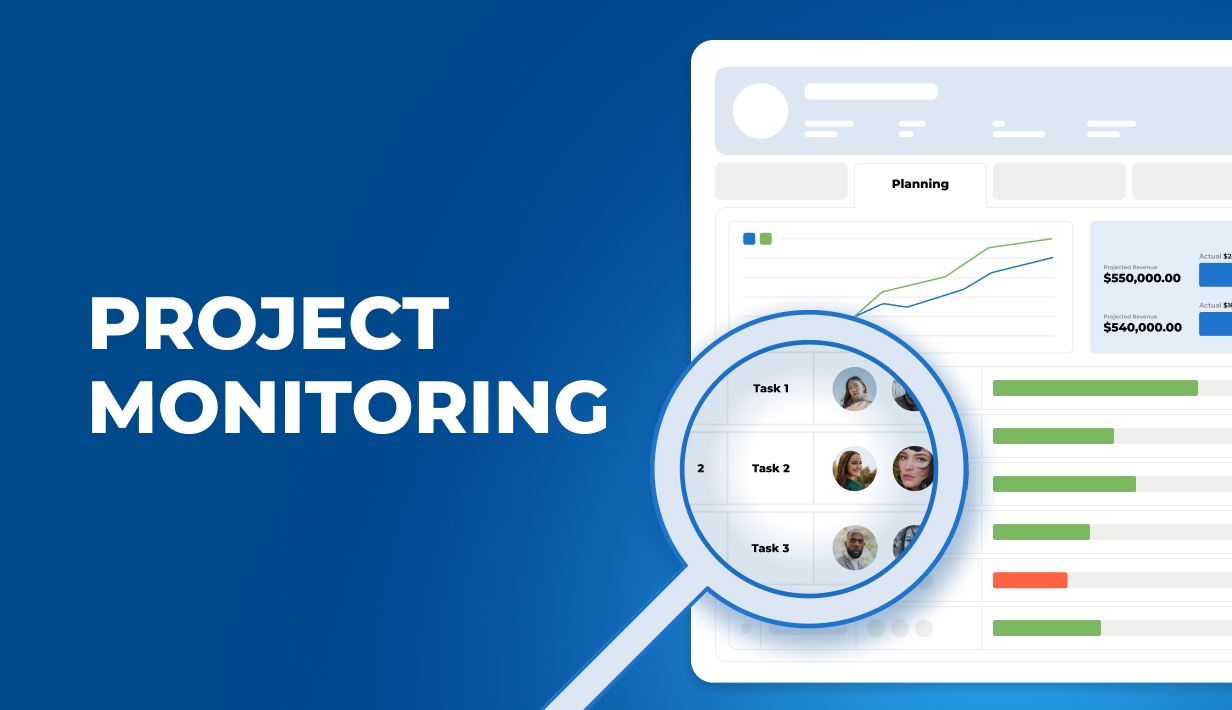
Employees, plans, finances… There are many factors that impact project success. Still, project delivery methods can really tie all of them together and ensure your operation is on the right track to success. Here’s how to make the most of them.
What’s in this article?
- What are project delivery methods?
- What are the best project delivery methods?
- How to choose the best project delivery methods for a project?
What Are Project Delivery Methods?
Project delivery methods are structured approaches to project execution or, more specifically, planning, financing and completing customer engagements. These methods define the contractual relationships, roles, responsibilities, workflows, and sequencing of tasks between the client, the service provider, and any third parties involved in the project.
Why Do Professional Services Companies Need Project Delivery Methods?
Saying that project delivery methods are the backbone of professional services companies is not an overstatement. These techniques allow firms in consulting, IT, architecture, engineering, accounting, construction, and more to align scope, schedule, and project budget with client expectations and internal capacity management. Additionally, they also specify risk mitigation techniques and affect internal communication, turning project management into smooth sailing—of course, when chosen correctly.
Common Project Delivery Methods for Professional Services Companies
Project delivery methodologies are forever shifting and evolving. The truth is that no matter the project delivery methods you choose, the goals remain largely the same: to deliver the project on time, on budget, and delight the customer.
Let’s take a look at a quick overview at the most common best project delivery methods used in professional services companies.
Waterfall Project Delivery Method
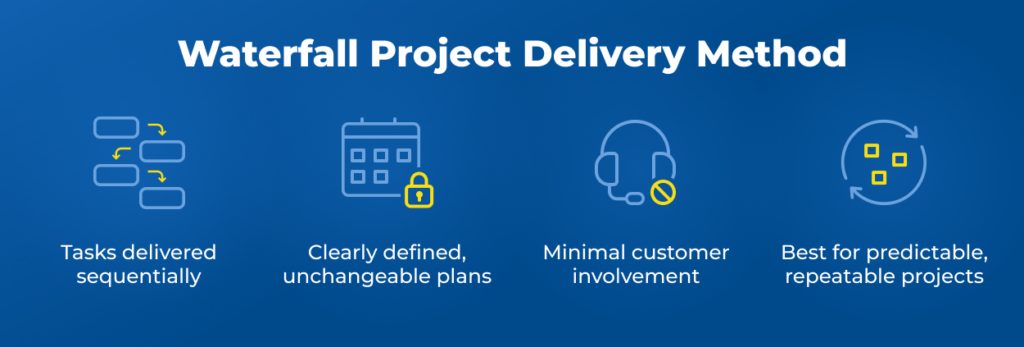
A more linear project delivery method, this is essentially classic project management where each stage of the project, from requirements to documentation through to release, must be completed before the next one begins. This method is great for easy estimating and scope definition up front, but doesn’t allow a lot of flexibility and creativity as the project progresses.
Waterfall Project Delivery Method – Key Characteristics
In Waterfall project management, tasks and phases are executed one after another, with no overlap and under the optimistic assumption that changes will not be needed once the project begins. To support this structure, Waterfall projects must be clearly defined at a planning stage, minimizing the risk of scope creep. Since all requirements are established in advance, client involvement is typically minimal after the project launches, allowing the team to focus on delivering key objectives on time and within scope.
Waterfall Project Delivery – Who Should Use It?
As the waterfall approach is one of the most rigid project delivery methods, it is best suited to projects with clearly defined requirements, predictable outcomes, and limited need for iteration—such as regulatory documentation, infrastructure rollouts, or compliance-based consulting work. It can also be used for repeatable projects a company specializes in and expects to experience no delays or other performance issues. For more dynamic operations, Waterfall methodology will not be a good fit.
Lean Project Management Method
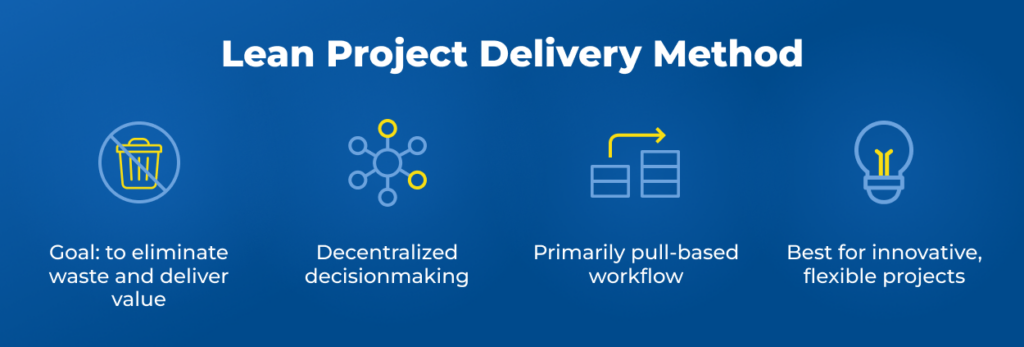
As the name suggests, lean project management is about focus and cutting away wasteful processes and cycles and maximizing project value.
In the context of professional services, Lean provides a flexible, adaptive framework that supports responsiveness to change, reduces non-value-adding activities (e.g., excessive meetings, redundant processes), and enhances cross-functional collaboration. However, it requires significant cultural changes within the organization and is not suitable for heavily regulated projects.
Lean Project Delivery Method – Key Characteristics
The core objective of any project guided by lean management is straightforward: to deliver maximum value to the customer. To achieve this, project managers are encouraged to prioritize the elimination of waste—whether that means reducing unnecessary meetings, simplifying overly complex processes, or streamlining workflows. Importantly, these improvements should be implemented continuously throughout the project lifecycle, not just during the planning phase.
Lean project delivery also introduces a distinct approach to work execution. Decision-making is decentralized, and team members are empowered with individualized ownership of tasks. This results in a primarily pull-based workflow, where work is initiated only in response to clear demand, ensuring resources are used efficiently and purposefully.
Lean Project Delivery Method – Who Should Use It?
Lean project delivery method is best for innovative, flexible projects that thrive with a more open-minded approach. Projects where flexibility, efficiency, and continuous delivery are essential—such as software development, creative services, business process optimization, and client advisory engagements can definitely benefit from this strategy.
Agile or Adaptive Project Management
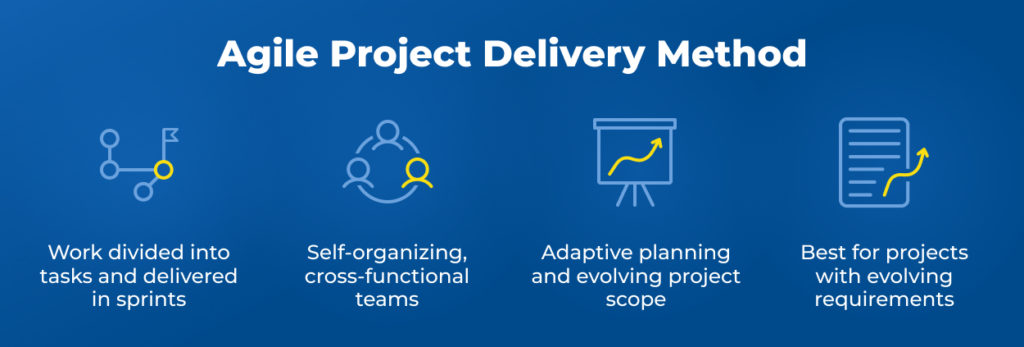
Balancing customer vision with team execution, Agile or Adaptive PM is an iterative and incremental method based on continuous collaboration between all stakeholders. Originally developed for software development, Agile has become widely adopted across professional services—particularly where requirements evolve over time and client input is critical throughout the project lifecycle.
This project delivery method is beneficial for creative projects with flexible goals that can be modified as needed along the project delivery process. Project timelines and budgets, however, can be hard to define and manage to ensure on-time delivery without overruns.
Agile Project Delivery Method – Key Characteristics
In Agile methodology, work is divided into smaller, manageable tasks delivered in short, iterative cycles—typically lasting one to two weeks. This structure fosters close collaboration with customers, who are not only encouraged but expected to provide ongoing feedback throughout the process.
The high level of flexibility offered by Agile, rarely matched by other project delivery approaches, is also reflected in the nature of Agile teams. These teams are self-organizing and cross-functional, empowered to make swift decisions without relying on hierarchical approval chains. As a result, Agile projects support adaptive planning, where both the project scope and upcoming tasks can evolve in real time based on new insights and client input.
Agile Project Delivery Method – Who Should Use It?
Any projects with evolving requirements and imprecise expectations is a perfect candidate for an Agile project delivery method. This methodology guarantees quick problem solving and tight feedback loop, making it a perfect choice for companies specializing in digital transformation initiatives, custom software development, and strategy consulting engagements.
Scrum Project Delivery Method
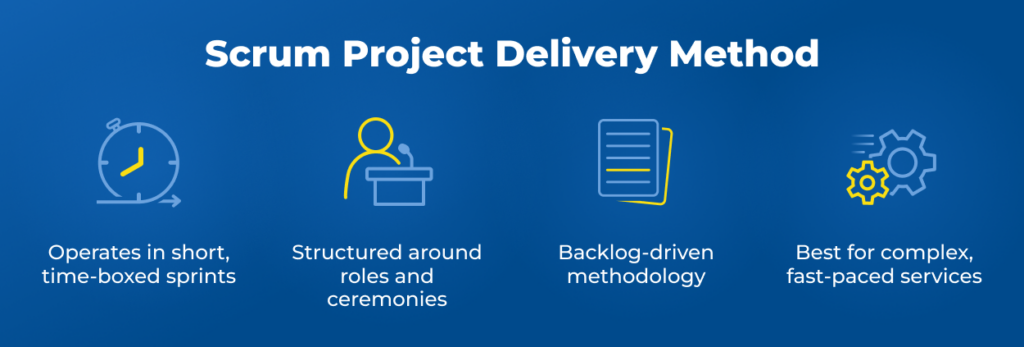
Scrum is a structured, team-based framework within the broader Agile methodology that enables incremental and iterative project delivery. It is designed to help teams deliver value quickly and adapt effectively to changing client needs.
Scrum organizes work into fixed-length cycles called sprints (typically 1–4 weeks), during which a cross-functional team delivers a potentially shippable product increment. The framework includes clearly defined roles, ceremonies, and artifacts to maintain transparency, accountability, and focus, resulting in an ability to deliver even very complicated projects on time and within budget.
Scrum Project Delivery Method – Key Characteristics
Much like Agile project management, Scrum operates in short, time-boxed sprints that typically last up to two weeks. During each sprint, team members take on clearly defined roles—such as Product Owner, Scrum Master, or Development Specialist—and focus exclusively on delivering the tasks outlined for that iteration.
Scrum sprints are structured around key ceremonies, including sprint planning, daily standups, and sprint reviews. These recurring rituals are designed to maintain process consistency while also providing regular opportunities for improvement. Given this structure, it’s clear why Scrum is considered a backlog-driven methodology: work is guided by a prioritized Product Backlog that continuously evolves based on client feedback and team learnings.
Scrum Project Delivery Method – Who Should Use It?
Scrum is especially effective in complex, fast-paced professional services environments where frequent feedback and continuous improvement are key to success. Projects where requirements are likely to evolve, early value delivery is critical, and collaborative, iterative development is desired usually benefit from this technique, making it a perfect candidate for the IT industry.
Kanban Managed Projects
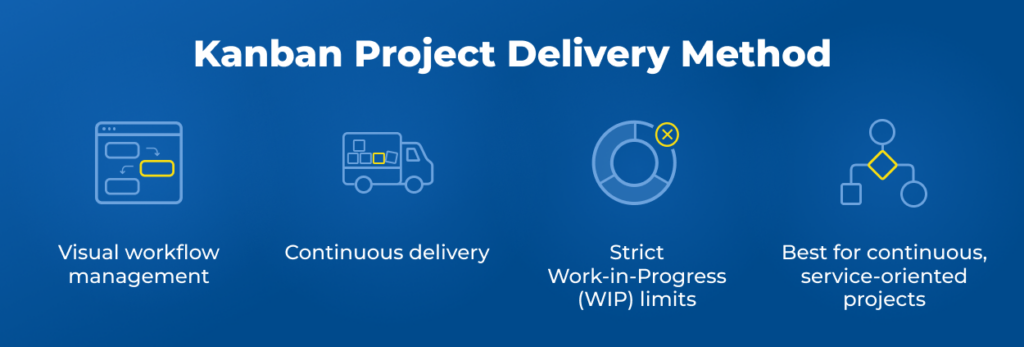
Kanban is a visual, flow-based project delivery that emphasizes continuous delivery to enhance efficiency and responsiveness. Unlike time-boxed Agile frameworks like Scrum, Kanban is flexible and non-iterative, making it particularly effective for teams managing ongoing, variable, or high-volume workloads—such as support services, operations, and maintenance-based engagements.
At its core, Kanban uses a visual board (physical or digital) divided into columns representing different stages of the work process. Tasks, represented as cards, move across the board as they progress, making bottlenecks, delays, and dependencies immediately visible.
Kanban Project Delivery Method – Key Characteristics
Among project delivery methods, Kanban distinguishes itself as a technique rooted entirely in visual workflow management. At the center of this approach is the Kanban board, which offers real-time visibility into task status and team capacity. This transparency enables project managers to track progress continuously and make informed decisions as work unfolds.
Effective capacity management is a cornerstone of Kanban. While the methodology emphasizes continuous delivery, it also imposes strict Work-in-Progress (WIP) limits—caps on the number of tasks that can be active at any given time. These constraints help prevent overload, promote focus, and ensure a steady, manageable flow of work through the system.
Kanban Project Delivery – Who Should Use It?
Which projects will benefit from Kanban project delivery? It is a perfect choice for projects that are continuous, service-oriented, or variable in scope—such as IT operations, creative services, and legal casework.
Prince2 Project Delivery Method
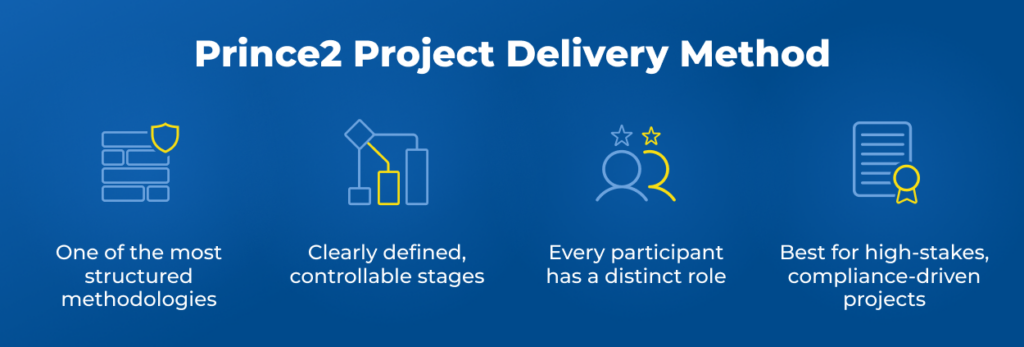
Projects IN Controlled Environments (PRINCE2) is a more recent method for delivering large-scale projects. PRINCE2 divides projects into manageable stages with clearly defined roles, responsibilities, and processes. The method is guided by seven principles, seven themes, and seven processes, ensuring that projects are aligned with business objectives, structured for accountability, and adaptable for varying complexity.
Prince2 Project Delivery Method – Key Characteristics
PRINCE2 is widely recognized as one of the most structured project delivery methodologies available. It divides projects into clearly defined, controllable stages, each with specific start and end points. At the conclusion of every stage, progress is reviewed against predefined guidelines to ensure the project remains aligned with its strategic objectives.
This emphasis on structure extends to team organization as well. Within the PRINCE2 framework, every participant is assigned a distinct role within a formal governance structure. Flexibility in these roles is limited—while team members are granted specific tolerances for time, cost, and scope, any deviation beyond those boundaries requires formal escalation and review.
Prince2 Project Delivery – Who Should Use It?
Prince2 is especially well-suited for formal, high-stakes, or compliance-driven projects often found in government contracts, infrastructure, and enterprise-level service engagements. It is also a perfect fit for any other projects where documentation, oversight, and alignment with strategic goals are paramount.
How to Choose a Project Delivery Method and Develop Your Strategy
How you plan to deliver your project, or your project strategy, will determine the best project delivery method or mix of methods you ultimately go with. Therefore, before choosing the best project delivery method for your company, you should consider:
- Project scope and duration. Clearly defined, shorter projects with known requirements will benefit from more traditional methods, such as Waterfall or Prince2. However, longer and more complex operations will require some more adaptive project delivery methods.
- Flexibility. When speed to delivery is a priority, Agile or Lean methods that emphasize early value delivery can accelerate timelines. However, projects with fixed deadlines will be easier to plan with Waterfall and Prince 2.
- Budget constraints. Fixed-price projects benefit from clearly defined scope, making them perfect candidates for methodologies based on upfront planning.
- Stakeholder involvement. Hands-off customers will be more satisfied with projects delivered in Agile, Scrum and Lean methodologies, which give them freedom to oversee and change the project as they see fit.
- Compliance requirements. Projects in regulated industries (e.g., finance, healthcare, government) may require delivery methods with strong documentation and formal control (e.g., PRINCE2, Waterfall).
PSA Software for Project Delivery Methods
How to use the best project delivery methods to your advantage? First, ensure you have what it takes to control them at each stage of the project – and BigTime can help you with that.
With BigTime, you can:
- Build detailed project timelines with milestones and tasks, and test multiple scenarios to create flawless plans for every new project.
- Allocate team members to projects and instantly see their associated costs reflected in the project budget.
- Enable employees to track their time, giving you real-time visibility into project progress based on actual work logs.
- Monitor your budget comprehensively—including overhead, wages, and other expenses—to maintain full financial oversight.
- Adjust project plans as needed, without worrying about resource allocation errors—the system will automatically alert you to potential conflicts.
- Analyze project performance upon completion and continuously refine your delivery process for future success.
Book a demo now and see how BigTime can transform your projects into well-oiled machines for making higher profits every time.

